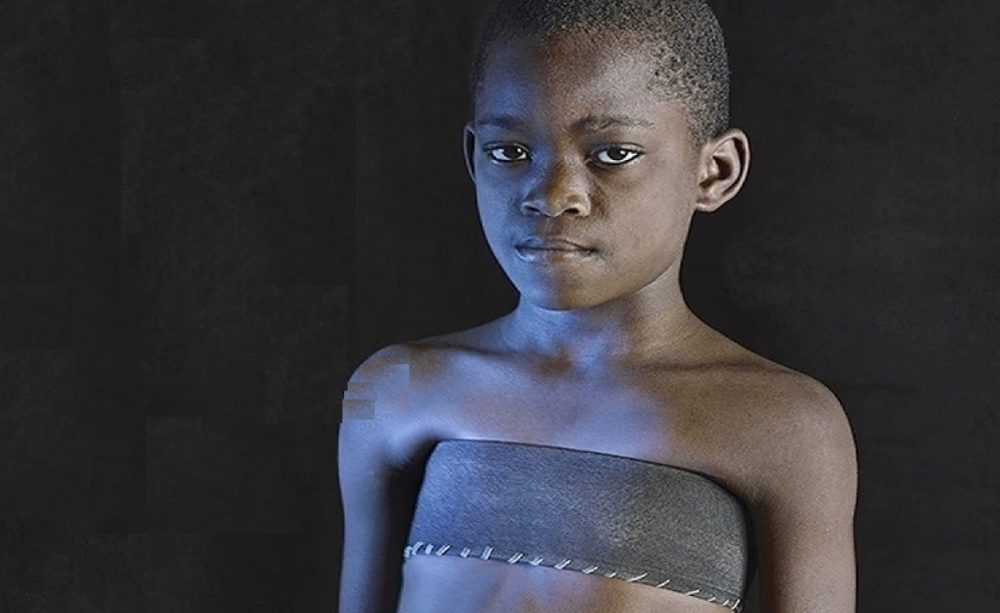Breast Ironing Fact Sheet

Breast Ironing also known as ‘Breast Flattening’ is the process whereby young pubescent girls breasts are ironed, massaged and/or pounded down through the use of hard or heated objects in order for the breasts to disappear or delay the development of the breasts entirely.
Fact Sheet
Key Facts
- Breast Ironing affects 3.8 million women around the world and has been identified as one of the five under-reported crimes relating to gender-based violence
- The practice is commonly performed by family members, 58% of the time by the mother
- Estimates range between 25% and 50% of girls in Cameroon are affected by breast ironing, affecting up to 3.8 million women across Africa.
- Around 1,000 9–15 year old girls in the UK are currently thought to be at risk of breast ironing
Introduction
Breast Ironing also known as ‘Breast Flattening’ is the process whereby young pubescent girls breasts are ironed, massaged and/or pounded down through the use of hard or heated objects in order for the breasts to disappear or delay the development of the breasts entirely. It is believed that by carrying out this act, young girls will be protected from harassment, rape, abduction and early forced marriage and therefore be kept in education.
Much like Female Genital Mutilation (FGM), Breast Ironing is a harmful cultural practice and is child abuse. Professionals working with children and young people must be able to identify the signs and symptoms of girls who are at risk of or have undergone breast ironing. Similarly to Female Genital Mutilation (FGM), breast ironing is classified as physical abuse.
Definition
The United Nations (UN) states that Breast Ironing affects 3.8 million women around the world and has been identified as one of the five under-reported crimes relating to gender-based violence. The custom uses large stones, a hammer or spatulas that have been heated over scorching coals to compress the breast tissue of girls as young as 9 years old. Those who derive from richer families may opt to use an elastic belt to press the breasts so as to prevent them from growing.
The mutilation is a traditional practice from Cameroon designed to make teenage girls look less ‘womanly’ and to deter unwanted male attention, pregnancy and rape. The practice is commonly performed by family members, 58% of the time by the mother. In many cases the abuser thinks they are doing something good for their daughter, by delaying the effects of puberty so that she can continue her education, rather than getting married.
Law
There is no specific law within the UK around Breast Ironing; however it is a form of Physical Abuse and if professionals are concerned a child may be at risk of or suffering Significant Harm they must act in accordance with Assessing Need and Providing Help. Local authorities should review their internal Violence against Women and Girls strategy and ensure it reflects breast ironing as a form of gender based violence.
The rights of women and girls are enshrined by various universal and regional instruments including:
- The Universal Declaration of Human Rights;
- The United Nations Convention on the Elimination of all Forms of Discrimination Against Women;
- The Convention on the Rights of the Child;
- The African Charter on Human and Peoples’ Rights;
- Protocol to the African Charter on Human and Peoples’ Rights on the rights of Women in Africa.
All these documents highlight the right for girls and women to live free from gender discrimination, free from torture, to live in dignity and with bodily integrity.
Risks
The girl generally believes that the practice is being carried out for her own good and she will often remain silent. Young pubescent girls usually aged between 9 – 15 years old and from practising communities are most at risk of breast ironing.
Indicators
Breast ironing is a well-kept secret between the young girl and her mother. Often the father remains completely unaware. Some indicators that a girl has undergone breast ironing are as follows:
- Unusual behaviour after an absence from school or college including depression, anxiety, aggression, withdrawn etc;
- Reluctance in undergoing normal medical examinations;
- Some girls may ask for help, but may not be explicit about the problem due to embarrassment or fear;
- Fear of changing for physical activities due to scars showing or bandages being visible
Where is it practiced?
Breast ironing is practiced in all ten regions of Cameroon and has been reported in Benin, Ivory Coast, Chad, Guinea-Bissau, Kenya, Togo, Zimbabwe and Guinea-Conakry.
Health consequences
Due to the instruments which are used during the process of breast ironing, for example, spoon/broom, stones, pestle, breast band, leaves etc. combined with insufficient aftercare, young girls are exposed to significant health risks. Breast ironing is painful and violates a young girl’s physical integrity. It exposes girls to numerous health problems such as cancer, abscesses, itching, and discharge of milk, infection, dissymmetry of the breasts, cysts, breast infections, severe fever, tissue damage and even the complete disappearance of one or both breasts.
This form of mutilation not only has negative health consequences for the girls, but often proves futile when it comes to deterring teenage sexual activity according to CAME Women and Girls. The practice not only seriously damages a child’s physical integrity, but also their social and psychological well-being.

